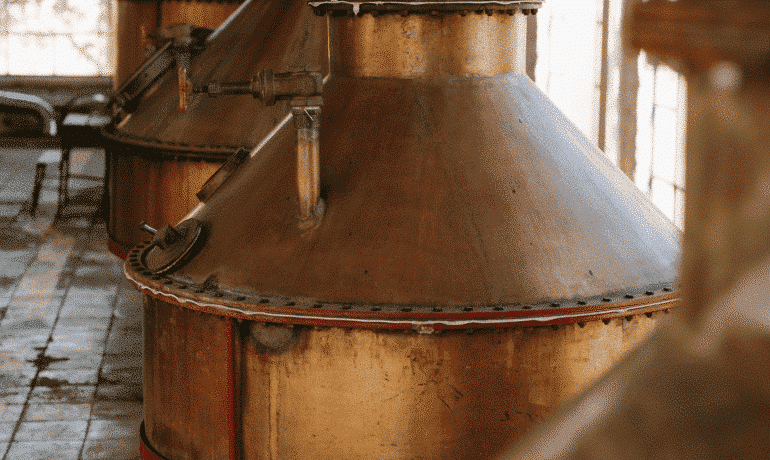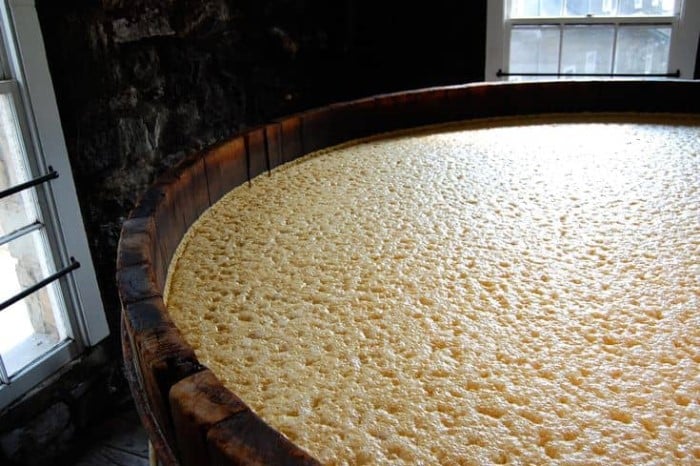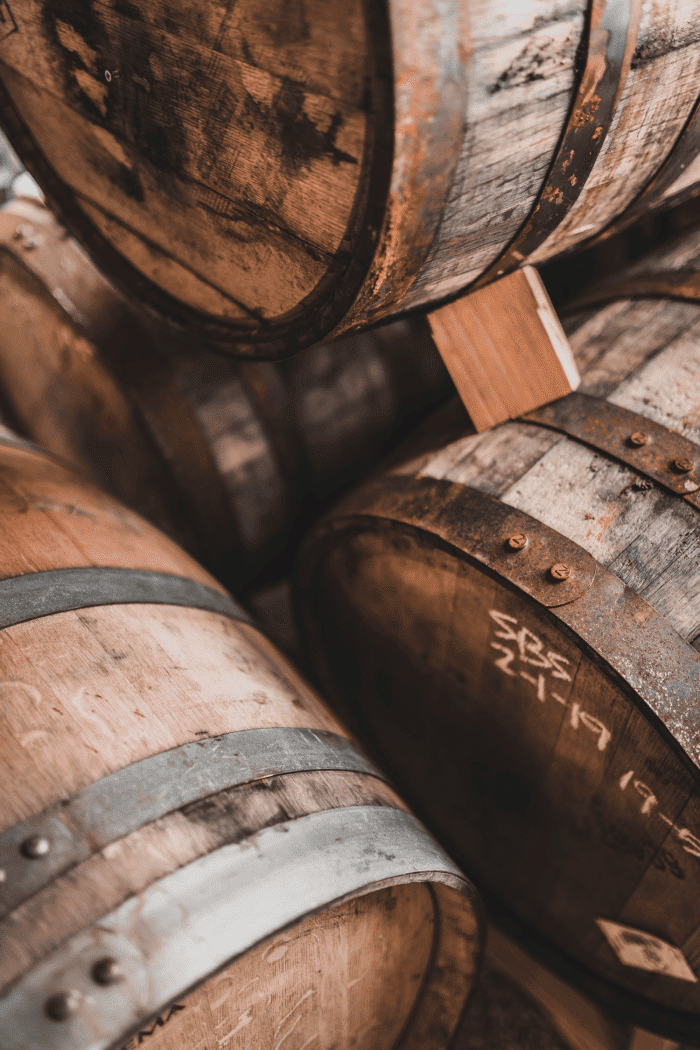If you’re wondering, “can bourbon be made at home?” the answer has two parts. If you have the proper equipment and ingredients at home, it is somewhat easy to create your own bourbon. However, distilling your own liquor is illegal in the United States without proper licensing.
Before diving right in and starting the distilling process, make sure you read this article to ensure you’re prepared. You will also need to purchase ingredients, many of which you likely don’t already have at home.
It is also important to note that is illegal in the United States to distill your own liquor without a license. Check your respective state laws concerning if you are allowed to construct a set-up for distilling bourbon.
Table of Contents
Can Bourbon Be Made At Home?
What do I need to make Bourbon?
If you’re still wondering, “As stated, bourbon is mostly corn, with the remainder being virtually any type of cereal grain. These grains can include quinoa, buckwheat, amaranth, or other cereals”.
Before beginning, you will also need materials to distill the liquor, aside from ingredients. First, you should aquire two 5 gallon jugs, to hold the liquor and ingredients. You will also need a 5 gallon oak barrel. If you don’t have one, or can’t find one, any type of container made of aged oak should be suffiicient.
In addition to these materials, you will also need a grain mill, funnel, food thermometer, and a 10 gallon copper still.
In terms of food ingredients, you will need 5.5 gallons of water, 7 pounds of corn maize, 1.5 pounds of rye, toasted oak chips, nut milk bags, and 1.5 pounds of barley. Finally, you will also need distillers yeast, a key ingredient.
So… We already answer the question “Can Bourbon be made at Home?” and told what you need to make it. Now, here’s all the steps.
Step 1: Making the Bourbon Mash
The first step in creating your bourbon is creating the “mash,” which gives the bourbon its smoky, sweet flavor.
Mash is created by combining the milled, or crushed, grain with water. The goal is that the water will be hot enough to activate the enzymes within the grain, which will then conver the startches into short-grain sugars. Again, this is what helps activate the unique taste of bourbon.
Bourbon mash should contain about 51% corn, wheat and rye ingredients, and water, of course. It is recommended to begin with a ration of the following: 75% corn, 15% rye, and 10% barley. After, you can mess around with the ratio, to come up with a mash that you are pleased with.
Once you have this ratio ready, you will add the grains to your corn and grain mill. Typically, you will need to run your grain mixture through the mill three or four times to ensure that the enzymes break down into these short-grain sugars.
Be sure to use your funnel when pouring out your grains and corn, as well as adding them to your mill. This will help prevent any messes and ensure you have the right measurements.
Now your grains have the best texture for creating bourbon. Next, you are going to add these perfectly milled starches into a pot of boiling water. This will allow the mash to eliminate the cracked grain. Continuously stir the mixture, to allow the starches to turn to sugar. This liquidy, sugar substance is known as wort.
This is where your thermometer comes in handy. Check for when the mixture approaches boiling point, and then remove the mash from the heat.
Step 2: Adding Yeast
Once you have your bourbon mash, it is time to ferment your future bourbon. This is where things really start to get interesting.
At this point, you will need to add a cup of distiller’s yeast to your mash mixture. From there, you should transfer the mixture, now with the yeast added, to the five gallon jugs, to begin fermentation.
The process of fermentation is when the mixture starts to change into consumable alcohol. Typically, it will take several days for the mixture to ferment, but this could change due to a variety of factors.
Certain types of yeast may cause the mixture to finish fermenting faster. If you are in a rush, you may want to use turbo yeast.
If the room you are fermenting the mash in is warmer, it will likely ferment faster. Try to leave your jugs in a warmer room, rather than a cold, dark basement. While it is fine to leave them in a cold room, the fermentation process will just take longer.
If there is a higher amount of sugar in the mash, for whatever reason, it could also prolong the amount of time it takes for your creation to ferment.
If you’re unsure if your mash has started to ferment, you should monitor it every few days, to check on it. About 24 to 48 hours after adding the yeast, you should check for any changes in your mash. For instance, there should start to be bubbles or air pockets, which signals that fermentation has begun.
Once you notice a change, that fermentation is occurring, you should wait at least two weeks before checking your mash again. Ensure that during this time, the lid of the barrel or oak container is sealed tight. The beginning of the fermenation process may affect the air in the barrel and impact the seal, so double check the lid to make sure.
Step 3: Distilling your Bourbon
Once your mash has been fermented and is ready to go, it is time to distill the mixture. This is arguably the most difficult part of the process, so read carefully.
First, you are going to put the mash into your copper still. Once it’s inside the still, you should heat it over medium heat. This allows the the mash to evaporate the alcohol, which is then distilled into a pot.
1. Foreshots
The first vapors during the distillation process are known as foreshots, and are not safe for human consumption. This contains methanol and can damage your vision if consumed. Ensure that the first five percent of your distillation is not consumed and discarded. Otherwise, there could be disastrous side effects.
2. Heads
Once you dispose of the foreshots, there are still parts of the distillation that you do not want to consume. Next comes the distillation known as heads, which may contain acetone, acetate, or acetaldehyde. This will be the next 20 to 30 percent of the distillation, and should also be discarded. While these are not as dangerous as methanol, there are still not safe to consume.
3. Hearts (the part you want to drink!)
Next, you will get to the part of the distillation known as hearts. This is the next 30 percent of the distillation that you will want to keep and consume. To ensure that you have made it to this part of the distillation process, you will want to taste a small bit of the distillate.
Do not swallow the small taste. Instead, taste it in your mouth and ensure that it takes sweet, smooth, and similar to bourbon. If it has a chemical taste that resembles solvents, spit it out and do not swallow.
4. Tails
Finally, eventually you will move out of the hearts phase, and into the tails portion. This part of the distillation process tastes bitter rather than sweet. This will comprise about 35 percent of your distillation. You can typically identify this part of the process because the liquid may have a slightly oily appearance on its surface.
Remember that distillation is a tricky process and doing so incorrectly can result in serious injury. This is why there are laws protecting Americans against distilling their own alcohol. Remember that the answer to “can bourbon be made at home?” has two parts.
Step 4: Aging
In order for bourbon to be considered authentic, straight bourbon, it must be aged in charred oak for at least two years. This helps to caramelize the sugars, and give the drink its unique taste and color.
Before distilling Bourbon… Know what makes it Bourbon!
It’s likely that you already know what bourbon is, especially if you’re wondering, “can bourbon be made at home?” Even if you are already familiar with the exquisite drink, it is important to understand its history and backstory before distilling it yourself.
Bourbon is an American whiskey, thought to have origin
s in Kentucky or New Orleans. It is amply named about the French Bourbon dynasty, which is why it either hails from Bourbon County in Kentucky, or the famous Bourbon Street in New Orleans.
Bourbon is a distilled liquor made from corn. In fact, the American Bourbon Association states that in order for a liquor to be marketed as Bourbon, it must have at least 51% corn. This corn content helps the drink have its sweet, unique flavor, that Bourbon fans know and love.
Typically, at a bourbon distillery, the liquor is made in barrels. In particular, it is made in charred oak barrels, which produce the best taste. Most bourbons are left in the barrels for at least two years. Don’t worry, even if you don’t have any large barrels at home, you can still create this delicious drink.
According to WhiskyFlavor.com, bourbon must be distilled at 160 proof before its moved to the barrel for aging.



